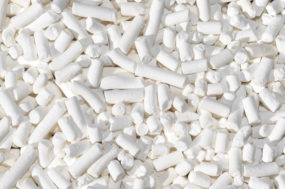I grew up on a small farm in western Iowa and my father was an adamant proponent of buying American.
He was a Ford man, and I remember going to the dealership with him to retrieve a brand-new 1971 F-250 pickup. My guess is that truck was probably 99.9 percent made in the U.S. Try that in 2009 and see what you get. You better have a metric wrench set and computer if you want to service it yourself.
Today’s financial crisis, mortgage/real estate crisis, steel shortages and other economic problems reach beyond the borders of the U.S. These days, we cannot live within the confines of the U.S. and not be influenced by the global marketplace. The U.S. economic issues have impacted many financial institutions around the world. If we are living on borrowed money, it must come from somewhere. That somewhere is overseas; with the U.S. economy considered one of the most stable in the world, it was an easy choice for foreign investors to put capital into the U.S.
The dairy industry is no different from almost every other business organization today, all of whom are finding opportunities in global growth. If we look at the dairy industry, the U.S. style of milking cows is looked at positively by rapidly developing economies such as China, Russia and India, to name a few. They want to learn how high-producing countries like the U.S. operate their dairies and buy the same type of equipment, source cows and gain management expertise from us. We have never before seen such a demand from foreign dairy farmers or investors wanting to tour facilities and get information on commercial dairy farming. Ten years ago, tour and information requests from producers overseas was a small percentage of our overall demand. Now, it is a significant portion of our sales effort.
The dairy equipment that is sold and used in the U.S. today comes from across the globe as well. Today, we source products from many countries around the world, along with many other corporations serving the dairy industry. And, while the majority of our product offering is sourced and built within the U.S., that continues to change.
As dairy farmers have migrated to the U.S. from other parts of the world for a better opportunity, they have brought different methods and different equipment with them. In a similar fashion, manufacturers of products for the dairy farm market from around the world, look at the U.S. as a tremendous opportunity for sales growth. Without this migration and movement of products around the globe, we would not have seen such a rapid development curve of technology. Walking around a farmshow here in the U.S. you will see many great products, developed and built within the U.S. and many developed and built elsewhere. To some it may still matter that a product comes from the U.S., but for many, I see the decision to buy is based on whether the product serves their needs, regardless of where it was made.
I recently did a search on the Internet for “dairy farm equipment” and came up with 1,170,000 hits. The fourth selection on the list was from outside of the U.S. This is the interesting issue that the Internet has brought to everyone who uses it – you are looking at a global marketplace. We are all more informed buyers with the Internet, and chances are you can find whatever you are looking for on the Internet, but it might be 8,000 miles away.
If we look at what is projected to happen with the world population in the next 40 years, the U.S. will only grow slightly. Europe will actually shrink in population, while India, China, Brazil and Russia all look towards significant growth. As those, and other countries develop, and the standard of living increases, their populations will demand better food. Top on their list is fresh dairy products. And, as those countries work to improve farming output and quality within their borders, there will continue to be an opportunity for producers in the U.S. to deliver imported dairy products as well.
We are truly a global marketplace now, and I see that as a positive direction for manufactures, as well as dairy producers and consumers. PD
Vern Foster
President & CEO
GEA WestfaliaSurge
vern.foster@geagroup.com



